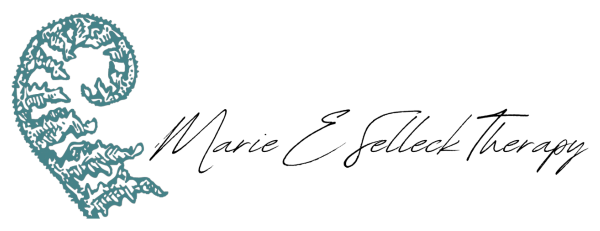Understanding Insecure Attachment and How Therapy can Help.
Therapy can absolutely help with insecure attachment. But first, you need to understand what you're dealing with.
What Is Insecure Attachment?
Attachment styles form in childhood based on how your caregivers responded to your needs. When those early experiences weren't consistent or safe, you develop insecure attachment patterns. These patterns don't just disappear when you grow up. They show up in your adult relationships, often in ways you don't even recognize.
The truth is, most people with insecure attachment don't know they have it. They just know their relationships feel hard.
Where Insecure Attachment Comes From
Insecure attachment develops when your basic needs for safety, consistency, and emotional connection aren't met in childhood. This doesn't always mean dramatic abuse or neglect. Sometimes it's subtle.
Maybe your parents were physically present but emotionally unavailable. Maybe they were loving sometimes and cold other times, leaving you confused about what to expect. Maybe they were overwhelmed by their own problems and couldn't attune to your needs. Maybe they responded to your emotions with anger, dismissal, or anxiety.
This is what we call developmental trauma. It's not always a single traumatic event. It's the ongoing experience of not having your emotional needs met during critical developmental periods. Your nervous system learned that the world isn't safe and people can't be trusted.
Here's what makes developmental trauma tricky: your parents might have loved you. They might have done their best. But if they couldn't provide consistent, attuned care, your attachment system adapted to protect you. Those adaptations made sense then. They don't serve you now.
The Three Types of Insecure Attachment
Anxious Attachment develops when caregiving was inconsistent. Sometimes your needs were met, sometimes they weren't. You learned to hyperactivate your attachment system—to protest loudly, to cling, to monitor constantly. As an adult, you need reassurance over and over. You panic when someone doesn't text back. You feel like you care more than your partner does. Small changes in their behavior send you into alarm mode.
Avoidant Attachment forms when emotional expression was discouraged or punished. Maybe crying made things worse. Maybe showing vulnerability meant being shamed. You learned to deactivate your attachment system—to shut down needs, to be self-reliant, to avoid depending on anyone. As an adult, closeness feels suffocating. You pull away when things get serious. Emotions feel overwhelming, so you shut them down.
Disorganized Attachment happens when caregivers were both the source of comfort and the source of fear. This creates an impossible situation: you need to go to them for safety, but they're also what's scary. As an adult, you want closeness but fear it simultaneously. You push people away and then panic when they leave. Your relationships feel chaotic because your nervous system never learned how to feel safe with connection.
“Your parents might have loved you. They might have done their best. But if they couldn't provide consistent, attuned care, your attachment system adapted to protect you.”
How These Show Up in Adult Relationships
Insecure attachment doesn't just affect romantic relationships. It impacts friendships, work relationships, and how you relate to yourself.
You might find yourself in the same painful patterns over and over. Maybe you always date emotionally unavailable people. Maybe you sabotage relationships when they get good. Maybe you're always the one doing all the work.
In friendships, anxious attachment might look like taking rejection extremely personally or needing constant validation. Avoidant attachment might show up as disappearing for months or keeping friendships superficial. At work, these patterns affect how you handle feedback, collaborate with teams, and respond to authority.
Here's what many people don't realize: your attachment style isn't your fault, but it is your responsibility to address.
How Therapy Helps Heal Attachment Wounds
Attachment wounds live in your nervous system, not just your thoughts. You can understand your patterns intellectually and still react the same way when triggered. That's because developmental trauma gets stored in parts of your brain that don't respond to logic alone.
Good therapy addresses this on multiple levels. First, it helps you recognize your patterns without shame. You developed these strategies to survive. They made sense at the time.
Second, therapy provides what you didn't get in childhood: a consistent, safe relationship. Your therapist becomes a secure base. You learn that people can show up reliably. You practice expressing needs and having them met appropriately. This experience rewires your expectations.
Third, effective therapy helps you process the developmental trauma that created your attachment style. This isn't about blaming your parents. It's about finishing the emotional processing your young nervous system couldn't complete at the time.
Finally, therapy gives you tools to manage your attachment responses in real time. You learn to recognize when you're triggered. You develop skills to calm your nervous system. You practice responding instead of reacting.
The Path Forward
Changing your attachment style takes time and consistent work. It's not about becoming perfect. It's about developing earned secure attachment, where you learn to trust yourself and others in healthy ways.
Research shows that with intentional work, you can shift from insecure to secure attachment. Your past doesn't have to determine your future. You deserve relationships that feel safe and connected.
Ready to Start Healing Your Attachment Patterns?
If you recognize yourself in these descriptions, you don't have to stay stuck. Insecure attachment can change with the right support and therapist who specializes in developmental trauma therapy.
I work with adults who are ready to break free from painful relationship patterns and build the secure connections they've always wanted. Therapy offers a powerful path to healing attachment wounds at their source.
Contact me today to schedule a consultation. Let's talk about how therapy can help you create the relationships you deserve.
Bowlby, J. (1969). Attachment and loss: Vol. 1. Attachment. Basic Books.
Ainsworth, M. D. S., Blehar, M. C., Waters, E., & Wall, S. (1978). Patterns of attachment: A psychological study of the strange situation. Lawrence Erlbaum.


